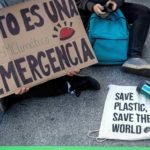What do you know about the Sustainable Development Goals (SDGs)?
On September 25, 2015, global leaders adopted the 17 Sustainable Development Goals (SDGs) to protect the planet, fight against, and attempt to eradicate poverty in order to build a more prosperous world for future generations. These goals were established as part of the 2030 Agenda for Sustainable Development.

The 17 SDGs aimed to engage governments, companies, civil society and individuals. Each goal includes a series of targets, each with their own indicators to determine whether the objective has been achieved.
The SDG framework includes goals that focus on access to clean energy, decent work and economic growth, responsible consumption and production, action against climate change and industrial innovation and infrastructure.
The complete list of Sustainable Development Goals (SDGs) is as follows:
Goal 1: End poverty in all its forms everywhere
This SDG describes poverty as a human rights problem that results not only from a lack of income, but also hunger, malnutrition, and a lack of adequate housing and access to healthcare and education.
Therefore, one of the objectives of this sustainable development goal for 2030 is to eradicate extreme poverty for everyone in the world, a degree of poverty that describes those who earn less than $1.25 a day.
Goal 2: End hunger, achieve food security, improve nutrition and promote sustainable agriculture
One out of every nine people is undernourished. This adds up to approximately 815 million people around the world. For this reason, this SDG aims to address hunger and improve nutrition through sustainable development, necessary investments in agriculture and the protection of forests, oceans, the water and biodiversity.
Goal 3: Ensure healthy lives and promote wellbeing at all ages
Over five million children under the age of five die every year. Since 2000, vaccinations against the measles prevented nearly 15.6 million deaths, but infant mortality remains high in the poorest regions of the planet. The SDG to ensure healthy lives and wellbeing includes the objective of reducing the global maternal mortality rate to under 70 for every 100,000 live births in 2030 through better assistance in childbirth, among other healthcare measures.
Goal 4: Ensure inclusive and equitable education and promote lifelong learning opportunities for all
More than 262 million children do not attend school. Education is the foundation for a better life and sustainable development. Access to inclusive, equitable education can help the local population acquire the tools needed o develop innovative, sustainable solutions to the biggest problems facing the world. These are some of the reasons for this SDG.
Goal 5: Achieve gender equality and empower all women and girls
The Millennium Development Goals led to significant progress in gender equality from 2000 to 2015. However, current data shows that nearly one out of every five women and adolescents between the ages of 15 and 49 have experienced physical or sexual violence. This SDG aims to end discrimination against women, applying legal frameworks and empowerment policies.
Goal 6: Ensure the availability and sustainable management of water and sanitation for all
One of the objectives of the SDG is to achieve universal, equitable access to safe and affordable water by 2030. Not only for consumption, but also for people in developing countries to have access to adequate sanitation and hygiene. The UN expects at least 25 percent of the world’s population to live in a country affected by drought in 2050, which exacerbates hunger and malnutrition.

Goal 7: Ensure access to affordable, reliable, sustainable and modern energy for all
Nearly three billion people, mostly in Asia and Sub-Saharan Africa, still cook with inefficient technologies and fuels that are highly contaminating. This SDG puts the focus on universal access to energy as a challenge for employment, security and climate change.
The targets for this goal are designed to achieve this goal by also increasing the use of renewable energy through public-private investment, higher levels of funding and a commitment from the countries.
Goal 8: Promote sustained, inclusive and sustainable economic growth, full and productive employment and decent work for all
The global unemployment rate is 5.6 percent. 61 percent of workers do not have a regulated job and the average gender wage gap is 23 percent around the world. In addition, 470 million jobs are needed by 2030 for those who will join the job market for the first time.
Nearly half the global population lives on approximately $2 per day and in many places, having a job is not a guarantee of escaping poverty.
According to this SDG, countries should revise their economic and social policies to promote sustained and inclusive economic growth that does not damage the environment and makes it possible to create jobs with decent working conditions, including for young people.
Goal 9: Build resilient infrastructure, promote inclusive and sustainable industrialization and foster innovation
Roads, information and communication technologies, sanitation, electricity and water are infrastructure that is scarce in many developing countries. 16 percent of the global population does not have access to mobile broadband networks, for example.
This SDG looks to technological progress to reach the environmental targets. It says that technology and innovation and needed to promote industry, without which there will be no development. It also notes the need to invest in advanced technology for manufacturing and improve mobile telecommunications so that people can be connected.
Goal 10: Reduce inequality within and among countries
With this SDG, the United Nations intends to achieve universal policies for the most disadvantaged and marginalized people, with a special focus on developing countries’ exports and innovations in technology that reduce the cost of money transfers for migrant workers.
One of the objectives for this SDG for 2030 includes for example, sustaining income growth for the bottom 40 percent of the population at a rate higher than the national average.
Goal 11: Make cities and human settlements inclusive, safe, resilient and sustainable
Nearly five billion people will live in cities by 2030. For this reason, this SDG aims to improve urban planning and management to make cities more inclusive, safe, resilient and sustainable. In short, it aims for a future with cities that allow access to energy, housing, transportation and more conveniences and opportunities for citizens.
Goal 12: Ensure sustainable consumption and production patterns
If the global population reaches 9.6 billion in 2050, we will need three times the resources on our planet in order to maintain our current lifestyle. Furthermore, less than three percent of water is potable, but 2.5 percent is frozen in ice caps and glaciers.
With this data as a reference, this SDG promotes the efficient use of resources, energy, infrastructure and environmentally-friendly jobs to foster responsible consumption and sustainable production that makes it possible to do more with less, without polluting the air, water or land.
It therefore advocates for the entire supply chain - from producers to consumers - to participate in this new process of sustainable production.

Goal 13: Take urgent action to combat climate change and its impacts
Climate change will have a negative impact on the world’s economies. Average global temperatures and sea levels are rising, with more extreme situations that coexist with the highest levels of CO2 emissions.
Therefore, the countries that signed the Paris Agreement committed to limit the increase in global temperature to less than two degrees Celsius.
Some of the targets for this SDG entail incorporating policies to combat climate change into national policies; improving environmental education; and achieving the objective of mobilizing $100 billion per year for the Green Climate Fund.
Goal 14: Conserve and sustainably use the oceans, seas and marine resources for sustainable development
The purpose of this SDG is to ensure that the oceans, seas and marine resources - as sources of life, trade and transportation - are managed effectively with sufficient resources and laws that reduce overfishing, marine pollution and ocean acidification.
Goal 15: Protect, restore and promote the use of terrestrial ecosystems,
sustainably manage forests, combat desertification and halt and reverse land degradation and halt biodiversity loss
With this 15th goal, the United Nations aims to guarantee the sustainable management of forests, as guarantors of life, and combat desertification. The international agreements that have been signed dig deeper into these measures in order to promote the equitable use of resources and financial investment to support biodiversity.
Goal 16: Promote peaceful and inclusive societies for sustainable development
And provide access to justice for all and build effective, responsible and inclusive institutions at all levels.
This SDG addresses the creation of laws and budgets that counter the threats of homicide, sexual violence, violence against children and human trafficking.
It aims to create more pacific, just societies through more responsible and inclusive institutions.
Goal 17: Strengthen the means of implementation and revitalize the global partnership for sustainable development
This SDG describes the need for partnerships among governments, the private sector and civil society to put the focus on people and the planet in order to finance, provide services and create policies for sustainable energy, infrastructure, transportation and communications on a global, national and local level.